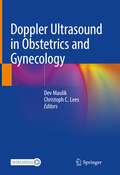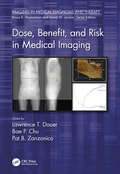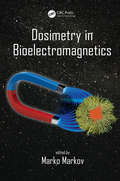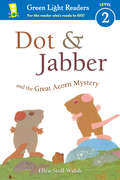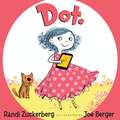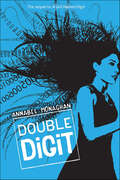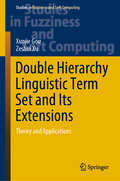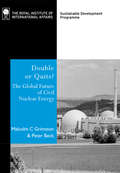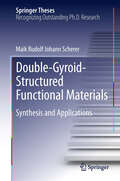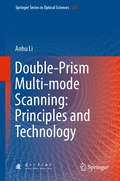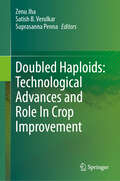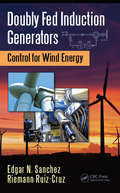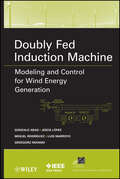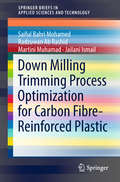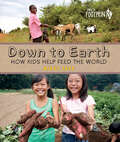- Table View
- List View
Doppler Ultrasound in Obstetrics and Gynecology
by Dev Maulik Christoph C. LeesExpanded and updated edition highlighting current standards and breakthroughs in the technology of Doppler ultrasound Includes latest advances in 3D and color doppler and 4D fetal echocardiography Includes more than 500 illustrations, including more than 150 in color
Dose, Benefit, and Risk in Medical Imaging (Imaging in Medical Diagnosis and Therapy)
by Lawrence T. Dauer Bae P. Chu Pat B. ZanzonicoThis timely overview of dose, benefit, and risk in medical imaging explains to readers how to apply this information for informed decision-making that improves patient outcomes. The chapters cover patient and physician perspectives, referral guidelines, appropriateness criteria, and quantifying medical imaging benefits. The authors have included essential discussion about radiologic physics in medical imaging, fundamentals of dose and image quality, risk assessment, and techniques for optimization and dose reduction. The book highlights practical implementation aspects with useful case studies and checklists for treatment planning. Clinicians, students, residents, and professionals in medical physics, biomedical engineering, radiology, oncology, and allied disciplines will find this book an essential resource with the following key features: Discusses risk, benefit, dose optimization, safety, regulation, radiological protection, and shared & informed decision-making. Covers regulatory oversight by government agencies, manufacturers, and societies. Highlights best practices for improving patient safety and outcomes. Gives guidelines on doses associated with specific procedures.
Dosimetry in Bioelectromagnetics
by Marko MarkovDosimetry refers to the calculation and assessment of the radiation dose received by the human body. The proposed book will place emphasis on the existence of physical and biophysical dosimetry. It will be discussed for the proper description and evaluation of the signal at the power generation system. It will cover in detail 10 different parameters of EMF (electromagnetism) exposure such as amplitude, frequency, vector, time of exposure, orientation, etc. In most published papers, these parameters are not well defined.
Dot & Jabber and the Great Acorn Mystery (Dot & Jabber)
by Ellen Stoll WalshDot and Jabber are mouse detectives with a mission: They’re determined to find out how a little oak tree grew in their field when there are no other oak trees around. They know it grew from an acorn, but how did the acorn get there? Dot and Jabber have a case to crack--if Jabber doesn’t eat the clues first! Ellen Stoll Walsh, creator of the popular Mouse Paint mice, introduces two new mice who love mysteries. Full of curiosity and humor, Dot and Jabber track clues to solve science mysteries for young readers. An afterword presents easy-to-understand facts about acorns and oak trees.
Dot-Com Design: The Rise of a Usable, Social, Commercial Web (Critical Cultural Communication #15)
by Megan Sapnar AnkersonFrom dial-up to wi-fi, an engaging cultural history of the commercial web industryIn the 1990s, the World Wide Web helped transform the Internet from the domain of computer scientists to a playground for mass audiences. As URLs leapt off computer screens and onto cereal boxes, billboards, and film trailers, the web changed the way many Americans experienced media, socialized, and interacted with brands. Businesses rushed online to set up corporate “home pages” and as a result, a new cultural industry was born: web design. For today’s internet users who are more familiar sharing social media posts than collecting hotlists of cool sites, the early web may seem primitive, clunky, and graphically inferior. After the dot-com bubble burst in 2000, this pre-crash era was dubbed “Web 1.0,” a retronym meant to distinguish the early web from the social, user-centered, and participatory values that were embodied in the internet industry’s resurgence as “Web 2.0” in the 21st century. Tracking shifts in the rules of “good web design,” Ankerson reimagines speculation and design as a series of contests and collaborations to conceive the boundaries of a new digitally networked future. What was it like to go online and “surf the Web” in the 1990s? How and why did the look and feel of the web change over time? How do new design paradigms like user-experience design (UX) gain traction? Bringing together media studies, internet studies, and design theory, Dot-com Design traces the shifts in, and struggles over, the web’s production, aesthetics, and design to provide a comprehensive look at the evolution of the web industry and into the vast internet we browse today.
Dot.
by Randi Zuckerberg*NOW A HIT TV SERIES*Meet Dot in this debut picture book by CEO and founder of Zuckerberg Media, editor-in-chief of Dot Complicated, and former Marketing Director of Facebook, Randi Zuckerberg! Dot's a spunky little girl well versed in electronic devices—she’s a technophile. She knows how to tap . . . to swipe . . . to share . . . and she pays little attention to anything else.Dot's tech-savvy expertise, mingled with her resourceful imagination, proves Dot knows lots and lots.But will she be able to unplug for one second to tap…swipe…and share with her real-life friends? Find out in this wonderful story about the day when Dot sets off on an interactive adventure with the world surrounding her.
Double Dare (From the Files of Madison Finn #14)
by Laura DowerIt&’s Madison vs. Egg when the school computer contest turns competitive!Madison assumes that she and her best guy friend, Egg, will partner up for the &“I Can Do That!&” computer contest to create a web page for homework help. So when Egg chooses Chet as his partner, Maddie feels hurt. Their love of computers has always bonded them together. Fiona offers to be Madison&’s partner, and Egg throws down a challenge: He double dares the girls to try to win against the boys. Madison embraces the challenge—she really wants to show off her computer skills. Or does she just want to beat Egg at his own game?
Double Digit (Digit Series)
by Annabel MonaghanTo say eighteen-year-old Farrah Higgins—or Digit—is good at math is a laughable understatement. She’s been cracking codes since childhood, and is finally at home with “her people” at MIT in Cambridge. Her talents are so off the charts that her laptop is under surveillance by both the CIA and an ecoterrorist named Jonas Furnis. So when she thoughtlessly hacks into the Department of Defense’s database, she lands in serious hot water inside and outside the law. Readers will be sad to turn the last page of this suspenseful, sassy, super smart thriller, the sequel to A Girl Named Digit.
Double Helix
by Nancy WerlinEli has lucked into a job at Wyatt Transgenics offered to him by Dr. Wyatt, the famed scientist. The salary is substantial, the work is interesting, and Dr. Wyatt seems to be paying special attention to Eli. It's almost too good to be true. Is there a catch? Eli's father is vehemently against his taking the job, but won't explain why. Eli knows that there's some connection between Dr. Wyatt and his parents, something too painful for his father to discuss. Something to do with his mother, who is now debilitated by Huntington's disease. As he continues to work at the lab, and to spend time with Dr. Wyatt, he begins to uncover some disconcerting truths about himself, about his very makeup. Rich and suspenseful, with a hair-raising conclusion, this is Nancy Werlin's most dynamic novel yet, one that explores the ethics and amazements of genetic engineering.
Double Hierarchy Linguistic Term Set and Its Extensions: Theory and Applications (Studies in Fuzziness and Soft Computing #396)
by Zeshui Xu Xunjie GouThis book presents the concept of the double hierarchy linguistic term set and its extensions, which can deal with dynamic and complex decision-making problems. With the rapid development of science and technology and the acceleration of information updating, the complexity of decision-making problems has become increasingly obvious. This book provides a comprehensive and systematic introduction to the latest research in the field, including measurement methods, consistency methods, group consensus and large-scale group consensus decision-making methods, as well as their practical applications. Intended for engineers, technicians, and researchers in the fields of computer linguistics, operations research, information science, management science and engineering, it also serves as a textbook for postgraduate and senior undergraduate university students.
Double Trouble (Jimmy Sniffles)
by Scott NickelJimmy Sniffles archenemy devises a plan to create an evil twin from Jimmy's nose hair. Written in graphic-novel format.
Double or Nothing: A Makers Story about 3D Printing (Makers Make It Work)
by Catherine DalyMason and Mia are twins . . . but don&’t always get along. When Mia wins a dolphin at the fair, Mason really, really wants one, too. If only Mia could make a twin dolphin! This story explores the Makers theme of 3D Printing and helps young makers understand how it works and get excited to try it for themselves! Mia and Mason are able to make a 3D scan of the dolphin to create a 3D model, and use a special kind of melted plastic to create the three-dimensional design. Tying into the popular Makers Movement, Makers Make It Work is a series of fun easy-to-read stories that focus on problem-solving and hands-on action. *Bonus Activity in the Book: Draw a picture of your favorite animal from each side—a 2D drawing, then use it to create a 3D model.
Double or Quits?: The Future of Civil Nuclear Energy
by Peter Beck Malcolm C. GrimstonGlobal energy demand is likely to rise substantially by the mid-21st century. At the same time, the use of fossil fuels may need to be severely curtailed to reduce the emission of greenhouse gases. Nuclear power is one of the few options that meet these conflicting requirements. However, its potential to do so is an issue of wide disagreement and high emotions, with balanced information hard to find. This text, the culmination of a two-year study, provides a dispassionate and objective assessment of the major disputes on the future role of this controversial fuel. Decisionmakers and their advisers, as well as proponents and opponents of the fuel, should find that this book provides clarification of the main issues influencing the future of nuclear energy: relative economics, public perceptions and the process of decisionmaking, nuclear research and development, waste management, reprocessing and proliferation, nuclear safety and nuclear power and the Kyoto Protocol. In the light of the many uncertainties in the field of energy, the relevance of these issues can only continue to grow.
Double-Gyroid-Structured Functional Materials: Synthesis and Applications
by Maik Rudolf SchererThe development of new high-tech applications and devices has created a seemingly insatiable demand for novel functional materials with enhanced and tailored properties. Such materials can be achieved by three-dimensional structuring on the nanoscale, giving rise to a significant enhancement of particular functional characteristics which stems from the ability to access both surface/interface and bulk properties. The highly ordered, bicontinuous double-gyroid morphology is a fascinating and particularly suitable 3D nanostructure for this purpose due to its highly accessible surface area, connectivity, narrow pore diameter distribution and superb structural stability. The presented study encompasses a wide range of modern nanotechnology techniques in a highly versatile bottom-up nanopatterning strategy that splits the fabrication process into two successive steps: the preparation of mesoporous double-gyroid templates utilizing diblock copolymer self-assembly, and their replication with a functional material employing electrochemical deposition and atomic layer deposition. The double-gyroid structured materials discussed include metals, metal oxides, and conjugated polymers, which are applied and characterized in high-performance devices, such as electrochromic displays, supercapacitors, chemical sensors and photovoltaics. This publication addresses a wide range of readers, from researchers and specialists who are professionally active in the field, to more general readers interested in chemistry, nanoscience and physics.
Double-Prism Multi-mode Scanning: Principles and Technology (Springer Series in Optical Sciences #216)
by Anhu LiThis book introduces double-prism multi-mode scanning theory and technology, focusing on double Risley-prism, multi-mode scanning models, methods and key techniques applied in multi-mode optical scanning and target tracking fields. It is first book to systematically and comprehensively describe basic multi-mode scanning theory and practical implementation techniques utilizing double Risley prisms. It includes rigorous modeling of double Risley-prism multi-mode scanning systems and high-efficiency solution algorithms for inverse problems with abundant illustrative examples and scanning error analyses, along with design guidance and performance test on specific scanning devices. Further, it presents the latest research results for forward scanning models and inverse tracking algorithms, sub-microradian fine scanning modeling with tilting double Risley prisms, nonlinear control strategy for double prism motion, calibration and experiment techniques for various double-prism layouts, as well as opto-mechanical system design and analysis. Featuring rigorous theoretical derivations illustrated with corresponding examples and original scanning apparatus, the book is a valuable reference resource for those developing and applying multi-mode scanning techniques in photoelectric scanning and tracking areas.
Doubled Haploids: Technological Advances and Role In Crop Improvement
by Suprasanna Penna Zenu Jha Satish B. VerulkarThis contributed volume covers the technology of double haploid production with special reference to anther culture and double haploid production in crop plants, and applications for basic and applied research in crop improvement. Globally, plant breeders aim to achieve higher crop productivity by using different breeding techniques. The double haploid genotypes have made this monotonous work easier and more efficient to a greater extent by achieving homozygosity and genetic fixation. Haploids are genotype with a gametophytic chromosome number, and a double haploid is a genotype developed when haploid cells undergo chromosome doubling. Artificial production of double haploids can easily shorten the time required to create homozygous plants which is vital in plant breeding. The book discusses how double haploids can help in accelerating conventional plant breeding programs and make early release of cultivars with superior and desirable traits along with greater utility in other research aspects of plant breeding, genetics, and genetic engineering. It also explains the role of double haploids in complementing back cross breeding by transferring genes of interest from wild relatives thus breaking genetic barriers. The book highlights the role of double haploids in genetic studies like inheritance of quantitative traits, quantitative trait loci (QTL) mapping, Genomics, gene identification, whole genome mapping and production of stable, transgenic plants. This book is essential for plant breeders, geneticists, researchers, and students in agricultural and crop sciences, offering insights into the transformative potential of double haploid technology in modern plant breeding.
Doubly Fed Induction Generators: Control for Wind Energy (Automation and Control Engineering)
by Edgar N. Sanchez Riemann Ruiz-CruzDoubly Fed Induction Generators: Control for Wind Energy provides a detailed source of information on the modeling and design of controllers for the doubly fed induction generator (DFIG) used in wind energy applications. Focusing on the use of nonlinear control techniques, this book: Discusses the main features and advantages of the DFIG Describes key theoretical fundamentals and the DFIG mathematical model Develops controllers using inverse optimal control, sliding modes, and neural networks Devises an improvement to add robustness in the presence of parametric variations Details the results of real-time implementations All controllers presented in the book are tested in a laboratory prototype. Comparisons between the controllers are made by analyzing statistical measures applied to the control objectives.
Doubly Fed Induction Machine
by Luis Marroyo Jesús López Gonzalo Abad Miguel Rodríguez Grzegorz IwanskiThis book will be focused on the modeling and control of the DFIM based wind turbines. In the first part of the book, the mathematical description of different basic dynamic models of the DFIM will be carried out. It will be accompanied by a detailed steady-state analysis of the machine. After that, a more sophisticated model of the machine that considers grid disturbances, such as voltage dips and unbalances will be also studied. The second part of the book surveys the most relevant control strategies used for the DFIM when it operates at the wind energy generation application. The control techniques studied, range from standard solutions used by wind turbine manufacturers, to the last developments oriented to improve the behavior of high power wind turbines, as well as control and hardware based solutions to address different faulty scenarios of the grid. In addition, the standalone DFIM generation system will be also analyzed.
Dove Arising
by Karen BaoPhaet Theta has lived her whole life in a colony on the Moon. She's barely spoken since her father died in an accident nine years ago. She cultivates the plants in Greenhouse 22, lets her best friend talk for her, and stays off the government's radar.Then her mother is arrested.The only way to save her younger siblings from the degrading Shelter is by enlisting in the Militia, the faceless army that polices the Lunar bases and protects them from attacks by desperate Earth-dwellers. Training is brutal, but it's where Phaet forms an uneasy but meaningful alliance with the preternaturally accomplished Wes, a fellow outsider.Rank high, save her siblings, free her mom: that's the plan. Until Phaet's logically ordered world begins to crumble...Suspenseful, intelligent, and hauntingly prescient, Dove Arising stands on the shoulders of our greatest tales of the future to tell a story that is all too relevant today.
Dove Arising
by Karen BaoPhaet Theta has lived her whole life in a colony on the Moon. She's barely spoken since her father died in an accident nine years ago. She cultivates the plants in Greenhouse 22, lets her best friend talk for her, and stays off the government's radar. <p><p> Then her mother is arrested. <p> The only way to save her younger siblings from the degrading Shelter is by enlisting in the Militia, the faceless army that polices the Lunar bases and protects them from attacks by desperate Earth-dwellers. Training is brutal, but it's where Phaet forms an uneasy but meaningful alliance with the preternaturally accomplished Wes, a fellow outsider. <p> Rank high, save her siblings, free her mom: that's the plan. Until Phaet's logically ordered world begins to crumble...Suspenseful, intelligent, and hauntingly prescient, Dove Arising stands on the shoulders of our greatest tales of the future to tell a story that is all too relevant today.
Dove Exiled
by Karen BaoPhaet Theta is a fugitive. Hiding in plain sight with her friend Wes's family on the drowned planet Earth, Phaet discovers the rugged beauty of the world her ancestors once called home. All her life, she's been taught to fear the "Earthbound," and their generosity and kindness surprise and touch Phaet. But when the Lunar Bases attack Wes's isolated village, Phaet's past catches up with her, and she's forced to choose: stay on Earth and fight beside the boy she's falling for, or stow away on a Moon-bound ship so she can save her brother and sister from the government that killed their mother. This thrilling sequel to Dove Arising plunges readers deeper into this complex and haunting world where freedom comes at a chilling price.From the Hardcover edition.
Down Milling Trimming Process Optimization for Carbon Fiber-Reinforced Plastic (SpringerBriefs in Applied Sciences and Technology)
by Saiful Bahri Mohamed Radzuwan Ab Rashid Martini Muhamad Jailani IsmailThis book offers recommendations on the milling processes for the carbon fiber reinforced plastic CFRP/Al2024. Due to the anisotropic and non-homogeneous structure of CFRP and the ductile nature of aluminum, the machining of this material is very challenging and causes various types of damage, such as matrix cracking and thermal alterations, fiber pullout and fuzzing during drilling and trimming, which affect the quality of machined surface. The book studies and models the machined surface quality of CFRP/Al2024 using a two-level full factorial design experiment. It describes the processes of trimming using down milling, and statistically and graphically analyzes the influence and interaction of cutting parameters. Lastly, the book presents the optimization of the cutting parameters in order to create a surface texture quality of CFRP/Al2024 to less than 1 µm.
Down Range: To Iraq and Back
by Bridget C. Cantrell Chuck Dean<p>As soldiers, we have spent countless years learning to survive the actual battle. Endless days on the firing range; countless hours in battle drills; months in combat learning the "ropes"; physical fitness training every day...all of these were dedicated to ensuring your survival and victory at the moment of truth. Now, it is time to dedicate some time to surviving when it is over. <p>PTSD is sometimes called "The gift that keeps on giving." If you die, that is not contagious--but if you live, and come out of the experience with a load of mental baggage, then your loved ones will most likely share in your struggles as well. <p>Reading this book ahead of time can be a form of inoculation, giving you insight that will help keep your combat reactions in perspective, and help you understand what is happening to your mind and body after wartime experiences. Just as we can equip ourselves to physically survive combat, we can also prepare to mentally survive the aftermath. This book is yet another tool in that equipping process.</p>
Down To Earth: How Kids Help Feed the World (Orca Footprints #1)
by Nikki TateKids all over the world help collect seeds, weed gardens, milk goats and herd ducks. From a balcony garden with pots of lettuce to a farm with hundreds of cows, kids can pitch in to bring the best and freshest products to their families' tables—and to market. Loaded with accessible information about the many facets of farming, Down to Earth takes a close look at everything from what an egg carton tells you to why genetic diversity matters—even to kids.
Down and Out in the New Economy: How People Find (or Don’t Find) Work Today
by Ilana GershonFinding a job used to be simple. You’d show up at an office and ask for an application. A friend would mention a job in their department. Or you’d see an ad in a newspaper and send in your cover letter. Maybe you’d call the company a week later to check in, but the basic approach was easy. And once you got a job, you would stay—often for decades. Now . . . well, it’s complicated. If you want to have a shot at a good job, you need to have a robust profile on LinkdIn. And an enticing personal brand. Or something like that—contemporary how-to books tend to offer contradictory advice. But they agree on one thing: in today’s economy, you can’t just be an employee looking to get hired—you have to market yourself as a business, one that can help another business achieve its goals. That’s a radical transformation in how we think about work and employment, says Ilana Gershon. And with Down and Out in the New Economy, she digs deep into that change and what it means, not just for job seekers, but for businesses and our very culture. In telling her story, Gershon covers all parts of the employment spectrum: she interviews hiring managers about how they assess candidates; attends personal branding seminars; talks with managers at companies around the United States to suss out regional differences—like how Silicon Valley firms look askance at the lengthier employment tenures of applicants from the Midwest. And she finds that not everything has changed: though the technological trappings may be glitzier, in a lot of cases, who you know remains more important than what you know. Throughout, Gershon keeps her eye on bigger questions, interested not in what lessons job-seekers can take—though there are plenty of those here—but on what it means to consider yourself a business. What does that blurring of personal and vocational lives do to our sense of our selves, the economy, our communities? Though it’s often dressed up in the language of liberation, is this approach actually disempowering workers at the expense of corporations? Rich in the voices of people deeply involved with all parts of the employment process, Down and Out in the New Economy offers a snapshot of the quest for work today—and a pointed analysis of its larger meaning.
